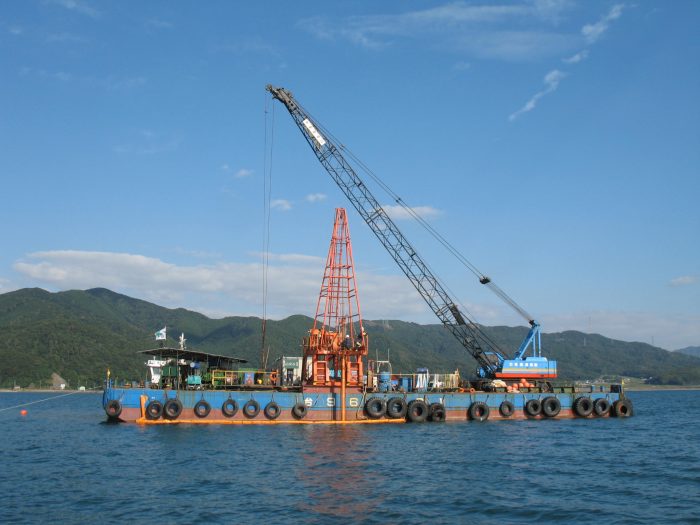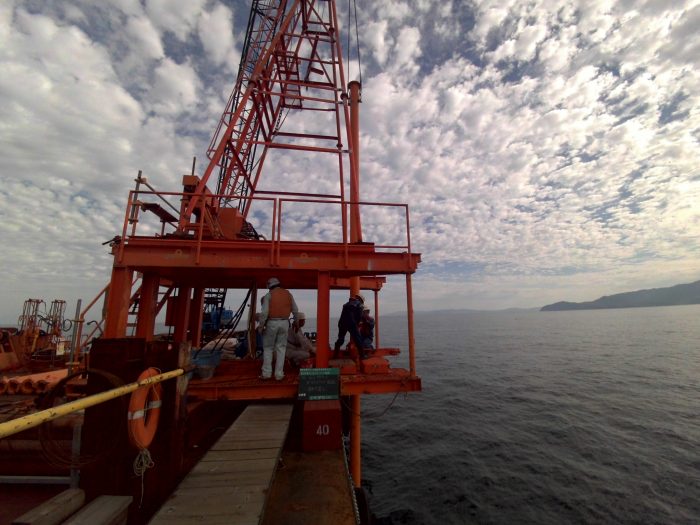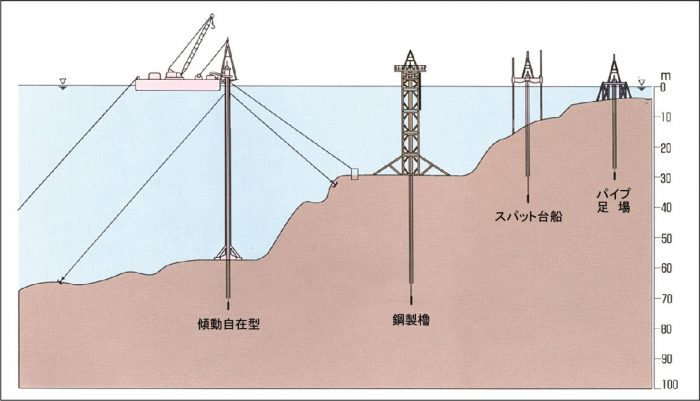In the construction of ocean structures, offshore drilling is essential in determining design conditions for the seabed and underwater structures. Unlike boring on land, offshore drilling has its own set of challenges in terms of safety, precision, and cost. Therefore, although various methods have been developed, each has its own advantages and disadvantages, making it important to select methods that satisfy both survey objectives and conditions of the sea.
Scaffolding type and usage
| Scaffolding type | Temporary construction method | Usage | Usage depths |
|---|---|---|---|
| Pipe scaffolding | Land transport by truck. Assembled locally, with materials loaded on to a barge or tiller for transport. | Suitable for quiet, inner bay locations relatively close to the shore. Can also be used in open seas depending on when the survey is conducted. A pier system is used if close to the revetment; stand-alone scaffolding if it is far. | 0~3m |
| Spud pontoon | Land transport mainly by truck. After being assembled locally, materials are loaded for transport and moved by a tugboat. | Can also be used with an inclined or uneven seabed. Less stable compared to a steel derrick, but because it is easy to move, this is used frequently within bays. Since it is assembled near the site, a port area is necessary. | 3〜20m |
| Steel derrick | Ocean transport mainly by pontoon survey ship. Materials are loaded using a pontoon survey ship. | Although this can be used under almost all conditions, it is difficult to use in locations where the seabed is inclined or very uneven. Anchors are used for stability in oceans with fast currents or rolling tides. Most frequently used for surveys in open seas. | 4〜30m |
| Adjustable tilt | Transported over land by truck. Rigged by pontoon survey ship and moved by tugboat. | A wide range of surveys can be done by merely adjusting the guide pipe. Can also be used when the seabed is inclined or uneven. Work safety is ensured, as it takes about 30 minutes to evacuate during severe weather, leaving only the guide pipe behind in the sea. | 3〜60m |



